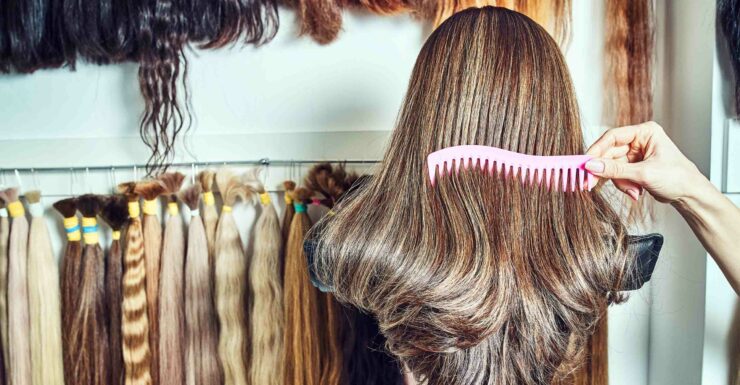Wigs and hairpieces have been used for centuries to enhance beauty, express cultural identity, and cover hair loss. Making a hairpiece can be a complex process that requires skill, precision, and creativity. In this article, we will explore the process of making it, from concept to creation.
Step 1: Consultation and Design

The first step is to consult with the client and discuss their needs, preferences, and expectations. The consultation involves analyzing the client’s hair type, color, texture, and density to determine the best design for their hairpiece. The designer will also consider the client’s facial features, skin tone, and lifestyle to ensure that it complements their overall appearance and meets their daily needs.
Step 2: Hair Selection and Preparation

The quality of the hair is crucial for achieving a natural and realistic look. The designer will select the hair type based on the client’s preference, budget, and lifestyle.
Human hair is the most natural-looking type and can be styled and treated like natural hair. However, it is also the most expensive type and requires regular maintenance. Synthetic hair is a more affordable option and is available in a wide range of colors and textures. However, it is less durable and can’t be heat-styled or colored like human hair.
Once the type is selected, the hair is prepared by washing, conditioning, and drying it thoroughly. It is then sorted and aligned to ensure that all the strands are facing the same direction. This process is essential for preventing tangling and maintaining its natural flow.
Step 3: Styling and Finishing

The designer will cut, trim, and shape the hairpiece to fit the client’s head and face shape. The hair can be styled using heat tools or rollers, and hair products can be used to add shine and hold.
The hairpiece is then washed, conditioned, and styled again to ensure that it looks and feels natural. The designer may also add accessories such as clips, combs, or adhesive tapes to secure it to the client’s head.
Step 4: Fitting and Maintenance

The final step is to fit it to the client’s head and provide instructions for maintenance. The designer will ensure that it fits comfortably and securely and make any necessary adjustments. The client will also receive instructions on how to care for and maintain it, including washing, styling, and storing it.
Regular maintenance is essential for prolonging its life and keeping it looking natural. The client should wash and condition their hairpieces regularly and avoid using hot tools or harsh chemicals that can damage them. They should also be stored properly when not in use, in a cool and dry place, and covered with a protective cap or net.
In conclusion, making a hairpiece is a complex and creative process that requires skill, precision, and attention to detail. From consultation to finishing, each step is crucial for achieving a natural and realistic-looking hairpiece that meets the client’s needs and expectations. By following these steps and maintaining it properly, clients can enjoy the confidence and beauty that a hairpiece can provide.
